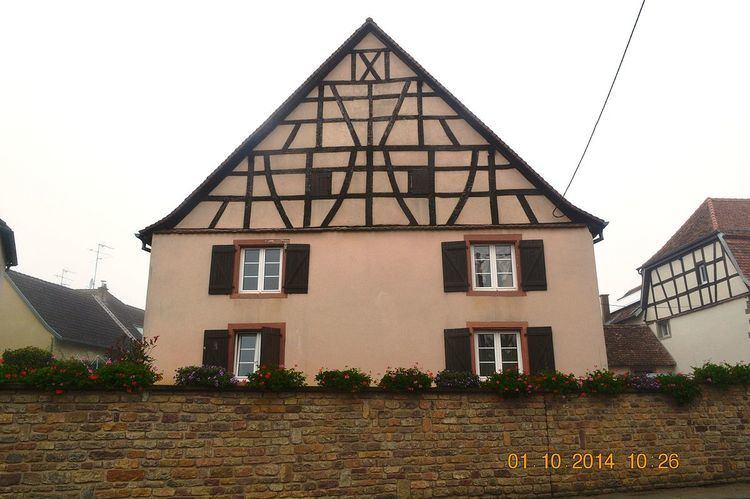Department Bas-Rhin Time zone CET (UTC+1) Area 6.02 km² Population 230 (1999) | Canton Ingwiller INSEE/Postal code 67013 / 67320 Local time Monday 5:32 AM | |
 | ||
Weather 9°C, Wind SW at 16 km/h, 70% Humidity | ||
Asswiller les cloches de la discorde
Asswiller is a French commune in the Bas-Rhin department in the Grand Est region of north-eastern France.
Contents
- Asswiller les cloches de la discorde
- Map of 67320 Asswiller France
- Geography
- Toponymy
- History
- Administration
- Demography
- Civil heritage
- Religious heritage
- References
Map of 67320 Asswiller, France
The inhabitants of the commune are known as Asswillerois or Asswilleroises.
The commune has been awarded one flower by the National Council of Towns and Villages in Bloom in the Competition of cities and villages in Bloom.
Geography
Asswiller is in the Northern Vosges Regional Natural Park some 27 km south-east of Sarralbe and 38 km south-west of Bitche. Access to the commune is by the D9 road from Durstel in the north-west passing through the heart of the commune and the village and continuing south-east to Petersbach. The D309 road goes south-west from the village to Drulingen. There is a large forest in the west with strips of forest along the borders with the remainder of the commune farmland.
The Isch forms the south-western boundary of the commune as it flows west to eventually join the Sarre west of Wolfskirchen. The Ottwillergraben forms the eastern border of the commune as it flows north to join the Eichel at Tieffenbach.
Toponymy
In German the commuen name is Aßweiler.
History
Asswiller was a small lordship dependent on the Counts of La Petite-Pierre. When the Count palatine of Bavaria, Georg Johann I of Bavaria, took possession of the county, he granted Asswiller as a hereditary fief to the Dalheim family (1588), who were soon succeeded by the Steinkallenfels family: senior officials of the palatine counts. These Protestant lords introduced the Reformation and remained in Asswiller from the 16th century to 1819. In 1789 Asswiller belonged to the Lord of Carbiston who had acquired it in 1771 by marriage with the heiress of the Steincallenfels family.
After the French Revolution Asswiller was attached to France in 1793 by decree of the National Convention which overrode the rights of princes holding possessions.
Administration
List of Successive Mayors
(Not all data is known)
Demography
In 2010 the commune had 285 inhabitants. The evolution of the number of inhabitants is known from the population censuses conducted in the commune since 1793. From the 21st century, a census of communes with fewer than 10,000 inhabitants is held every five years, unlike larger towns that have a sample survey every year.
Sources : Ldh/EHESS/Cassini until 1962, INSEE database from 1968 (population without double counting and municipal population from 2006)
Civil heritage
Many buildings and structures in Asswiller are registered as historical monuments:
Religious heritage
Several religious buildings and structures are registered as historical monuments:
The Cemetery contains two items that are registered as historical objects:
The Lutheran Church contains two items that are registered as historical objects:
